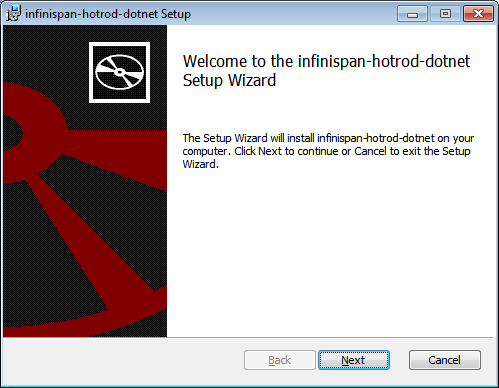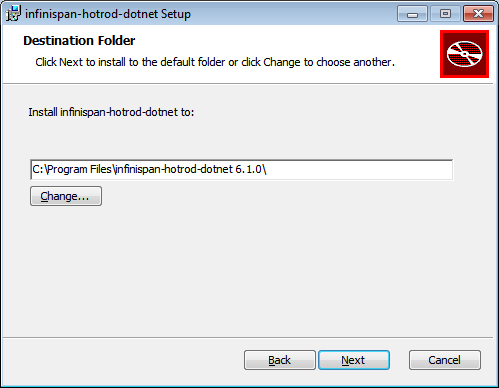此内容没有您所选择的语言版本。
11.8. Hot Rod C# Client
The Hot Rod C# client allows .NET runtime applications to connect and interact with Red Hat JBoss Data Grid servers. This client is aware of the cluster topology and hashing scheme, and can access an entry on the server in a single hop similar to the Hot Rod Java and Hot Rod C++ clients.
The Hot Rod C# client is compatible with 64-bit operating systems on which the .NET Framework is supported by Microsoft. The .NET Framework 4.5 is a prerequisite along with the supported operating systems to use the Hot Rod C# client.
11.8.1. Hot Rod C# Client Download and Installation
复制链接链接已复制到粘贴板!
The Hot Rod C# client is included in a .msi file
jboss-datagrid-<version>-hotrod-dotnet-client.msi packed for download with Red Hat JBoss Data Grid . To install the Hot Rod C# client, execute the following instructions.
Procedure 11.2. Installing the Hot Rod C# Client
- As an administrator, navigate to the location where the Hot Rod C# .msi file is downloaded. Run the .msi file to launch the windows installer and then click .
Figure 11.1. Hot Rod C# Client Setup Welcome
- Review the end-user license agreement. Select the I accept the terms in the License Agreement check box and then click .
Figure 11.2. Hot Rod C# Client End-User License Agreement
- To change the default directory, click or click to install in the default directory.
Figure 11.3. Hot Rod C# Client Destination Folder
- Click to complete the Hot Rod C# client installation.
Figure 11.4. Hot Rod C# Client Setup Completion
11.8.2. Hot Rod C# Client Configuration
复制链接链接已复制到粘贴板!
The Hot Rod C# client is configured programmatically using the ConfigurationBuilder. Configure the host and the port to which the client should connect.
Sample C# file configuration
The following example shows how to use the ConfigurationBuilder to configure a RemoteCacheManager.
Example 11.9. C# configuration
11.8.3. Hot Rod C# Client API
复制链接链接已复制到粘贴板!
The
RemoteCacheManager is a starting point to obtain a reference to a RemoteCache.
The following example shows retrieval of a default cache from the server and a few basic operations.
Example 11.10.
11.8.4. String Marshaller for Interoperability
复制链接链接已复制到粘贴板!
To use the string compatibility marshaller, pass an instance of
CompatibilityMarshaller to the Marshaller() method of the ConfigurationBuilder object similar to this:
Note
Attempts to store or retrieve non-string key/values will result in a
HotRodClientException being thrown.



